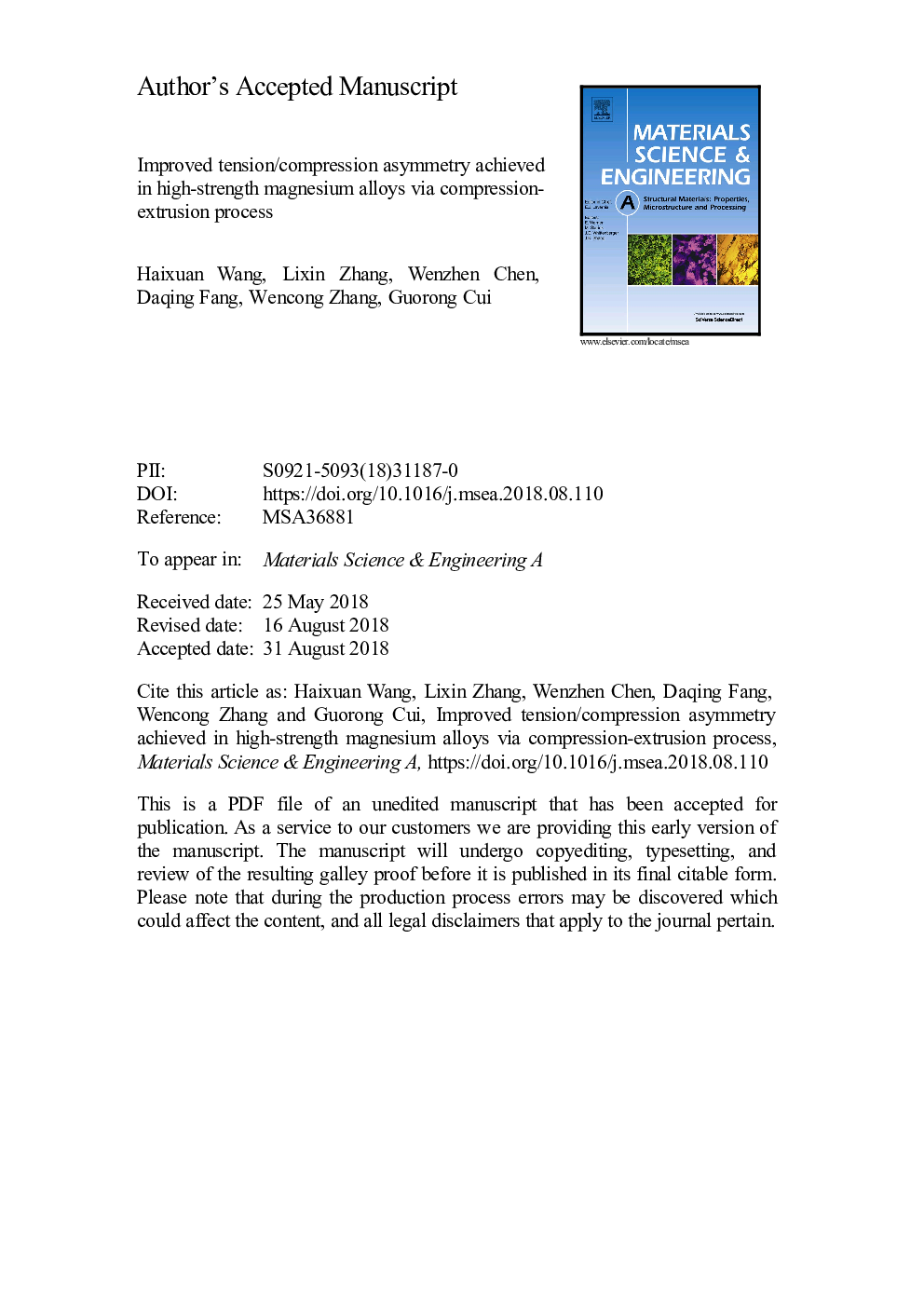| Article ID | Journal | Published Year | Pages | File Type |
|---|---|---|---|---|
| 10142015 | Materials Science and Engineering: A | 2018 | 20 Pages |
Abstract
High-performance magnesium alloy rods with mechanical isotropy were fabricated by a designed compression-extrusion process to better adapt for industrial massive manufacture. To be specific, yield strengths over 240â¯MPa in both tension and compression were obtained, highlighting the improvement of tension/compression asymmetry. After investigation, tension deformation in the later compression-extrusion was dominated by slip similar to that in the as-received rod. A slight decrease in yield strength was observed in spite of remarkable grain refinement, mainly caused by the weakening of {0002} fiber texture that enhanced the activation of â¯basal slip. On the contrary, compression deformation was initially induced by {10â12} twinning, responsible for the rather low yield strength, but it gradually shifted to slip particularly after twinning exhausted. The twinning-induced deformation was significantly suppressed by both texture weakening and grain refining, resulting in a significantly increased tendency in yield strength. Both the yield strengths could be well estimated by texture modified Hall-Petch relationships. Additionally, excellent ductility of ~35% in elongation was simultaneously achieved due to the combined contribution of texture weakening and grain refinement, indicating good secondary formability. Moreover, the addition of rare earth element could further enhance the uptrending tendency of yield strengths, which was mainly due to dispersed reinforcement.
Keywords
Related Topics
Physical Sciences and Engineering
Materials Science
Materials Science (General)
Authors
Haixuan Wang, Lixin Zhang, Wenzhen Chen, Daqing Fang, Wencong Zhang, Guorong Cui,
